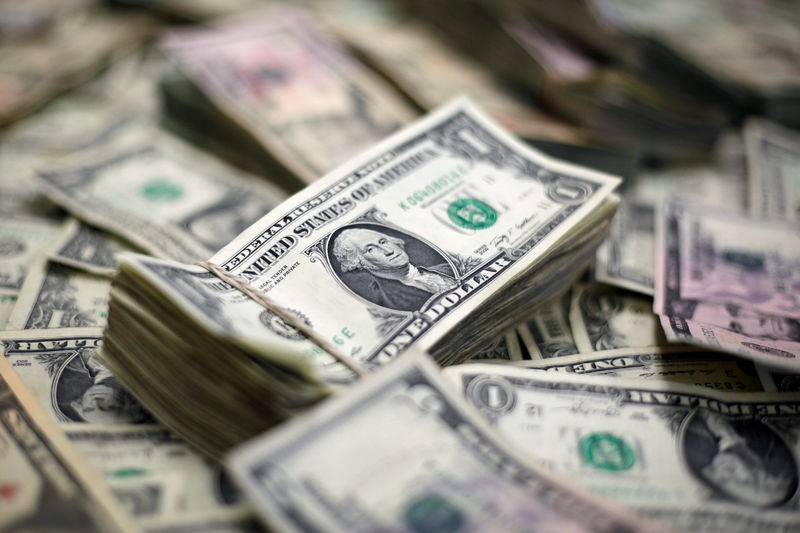
At 04:35 ET (08:35 GMT), the Dollar Index, which tracks the greenback against a basket of six other currencies, traded 0.12% higher at 105.090, after falling as low as 104.52 on Friday, the lowest level for just under a month.
The dollar has steadied Tuesday currencies, recovering slightly from last week’s losses after softer-than-expected nonfarm payrolls data saw traders once again begin pricing in interest rate cuts by the central bank.
Traders are now pricing in September as the favorite month for the Federal Reserve to start its rate-cutting cycle.
The economic calendar is light in the week ahead so the focus will be on several Fed policymakers who are due to speak.
Richmond Fed President Thomas Barkin has already started the ball rolling, saying interest rates in the U.S. currently stand at such “restrictive” heights that they can help tamp down demand and cool sticky inflationary pressures.
“It looks like Friday’s slightly softer U.S. jobs report has been enough to put paid to any ideas of a Fed hike this year,” analysts at ING said, in a note. “And whilst the pricing of the Fed easing cycle this year has grown (45bp of cuts now expected for this year), the biggest impact of last week’s FOMC/NFP double-header has been the decline in cross-market volatility.”
In Europe, EUR/USD traded 0.1% lower to 1.0760, after data showed that German exports rebounded in March, buoyed by strong U.S. and Chinese demand for German-made goods, but a disappointing month for industrial orders dashed hopes for a swift economic recovery.
The European Central Bank has signalled a rate cut in June, but there remains a great deal of uncertainty over what happens with monetary policy after this.
GBP/USD traded 0.2% lower to 1.2534, ahead of Thursday’s meeting of the Bank of England.
“Our core view is that it will still be a little early for the BoE to shift its cautionary position and signal a June rate cut,” said ING, with the bank looking for a cut in August rather than June.
“However, a June BoE rate cut is only 30% priced by the market and we doubt sterling has to rally too hard if the BoE’s language on Thursday is unchanged.”
In Asia, USD/JPY rose 0.2% to 154.13, bouncing after the pair sank as low as 151.86 on Friday for the first time since April 10, as softer-than-expected monthly U.S. jobs data added to Bank of Japan data that suggested official intervention could have amounted to over $58 billion.
The yen has resumed its fall despite Japan’s government’s top currency diplomat Masato Kanda saying on Tuesday that it may have to take action against any disorderly, speculative-driven foreign exchange moves.
AUD/USD pair rose 0.4% to 0.6599, after the RBA kept rates steady as widely expected and warned that inflation will take longer to come down in the near-term.
But the RBA stopped short of mentioning any plans for further rate hikes, disappointing traders that were positioning for such signals, especially after a hotter-than-expected inflation reading for the first quarter.
To read the full article, Click Here
